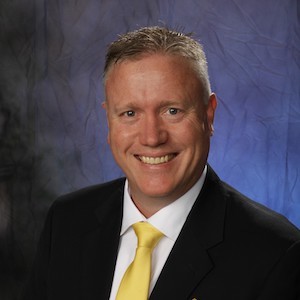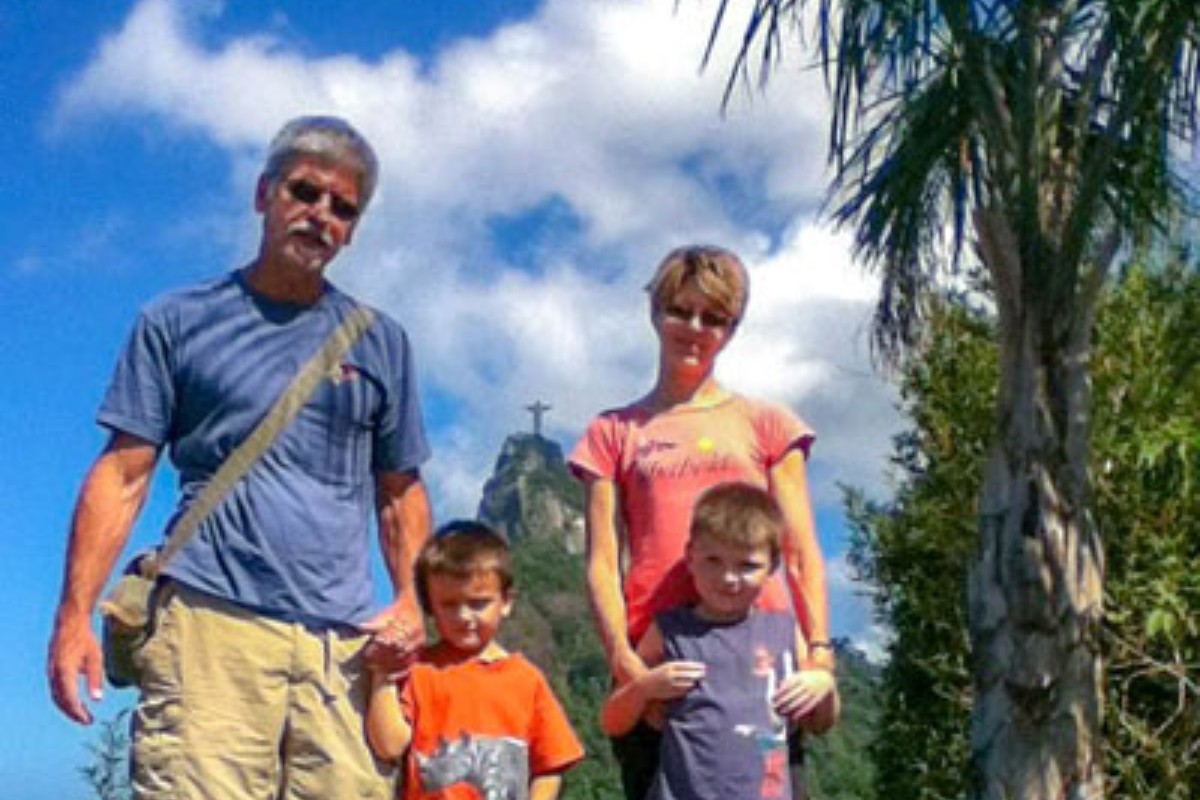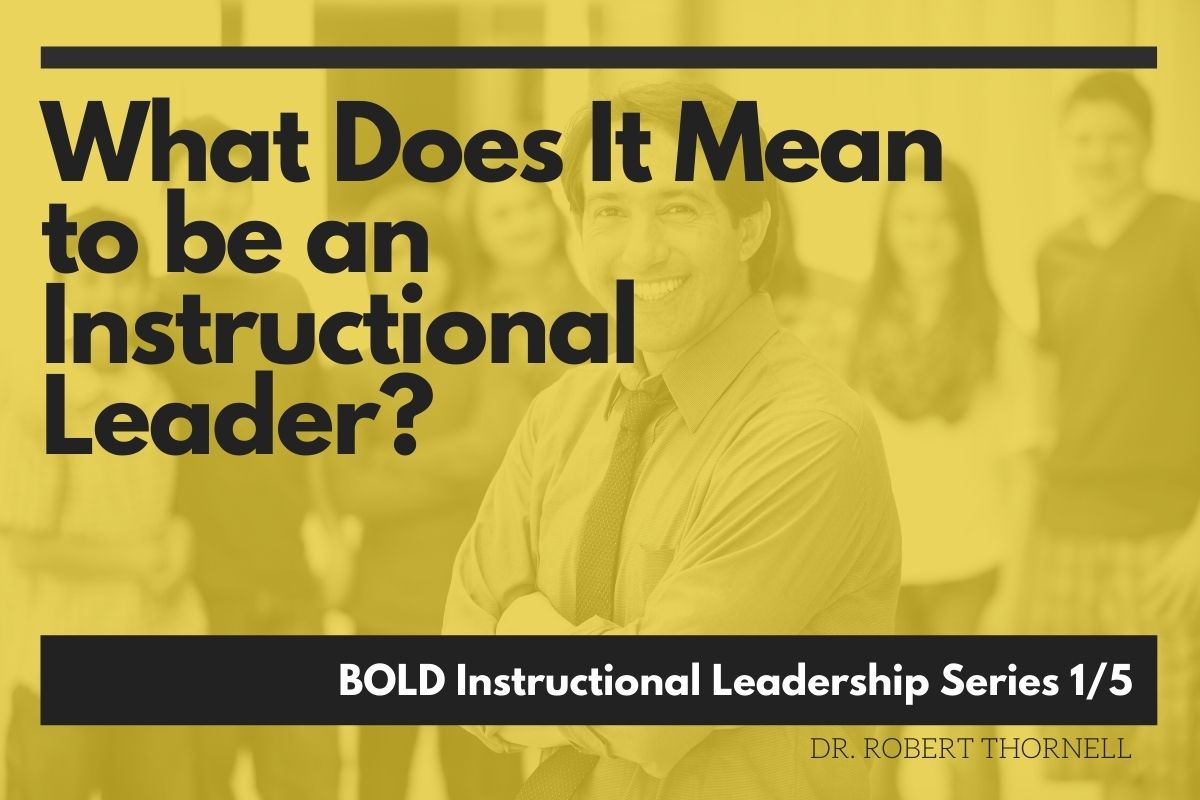How can a Leader Impact Instruction?
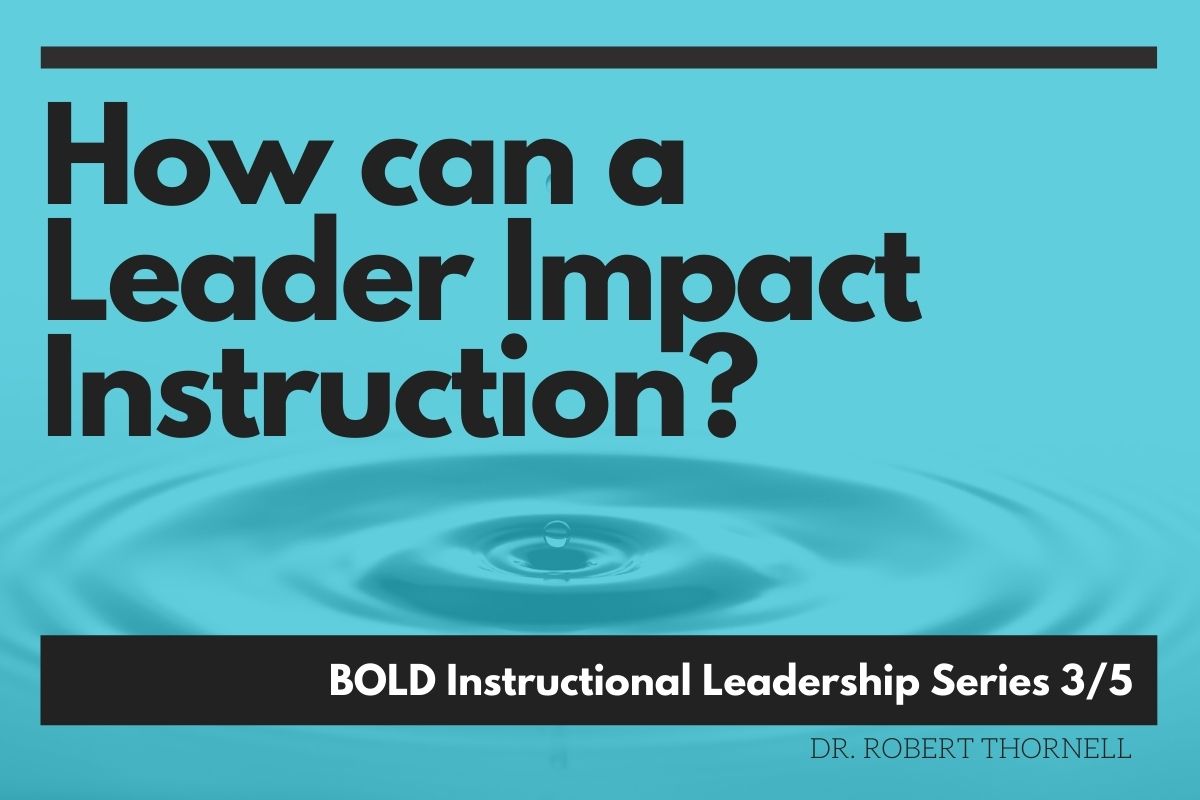
Bold Instructional Leadership is a decision a school leader makes every single day. Some of those decisions come in the form of planning, hiring, setting up systems, etc. to create a culture of learning, but others involve actually implementing and monitoring a system. In part one of our series, What Does It Mean To Be An Instructional Leader?, we examined some of the research around why instructional leadership is so important as well as the characteristics of exceptional school leaders. Part 2, How Can An Instructional Leader Impact The Curriculum? explored ideas and activities school leaders can put in place to enhance and support curriculum. These included being intentional with resource stewardship, equity and access to a high quality curriculum for all, and specific expectations for lesson design. In Part 3, we will share some of the ways school leaders can impact learning and teaching on their campus.
Recognizing and assessing quality instruction is a paramount skill for all instructional leaders. Many principals I know enjoy this part of the job. Walking the campus and classrooms and seeing students and teachers working and learning together can be a highlight of any principal’s day. There are days when I had to get out of my office just to keep my sanity, and walking the building never failed to cheer me up and help me remember the importance of the job. However, to truly be a BOLD Instructional Leader, the responsibility to impact instruction and look on with a willing, but critical eye, can be the difference between a good school and a great one!
In 2019, the National Association of Secondary School Principals (NASSP) published 10 Strategies to Improve Instructional Leadership and predictably several of them are directly tied to the leaders observing what is going on in the classroom and making critical assessments about what they see. (Sheninger, 2019) This article will address several specific activities to jumpstart ways to address the instructional level on your campus.
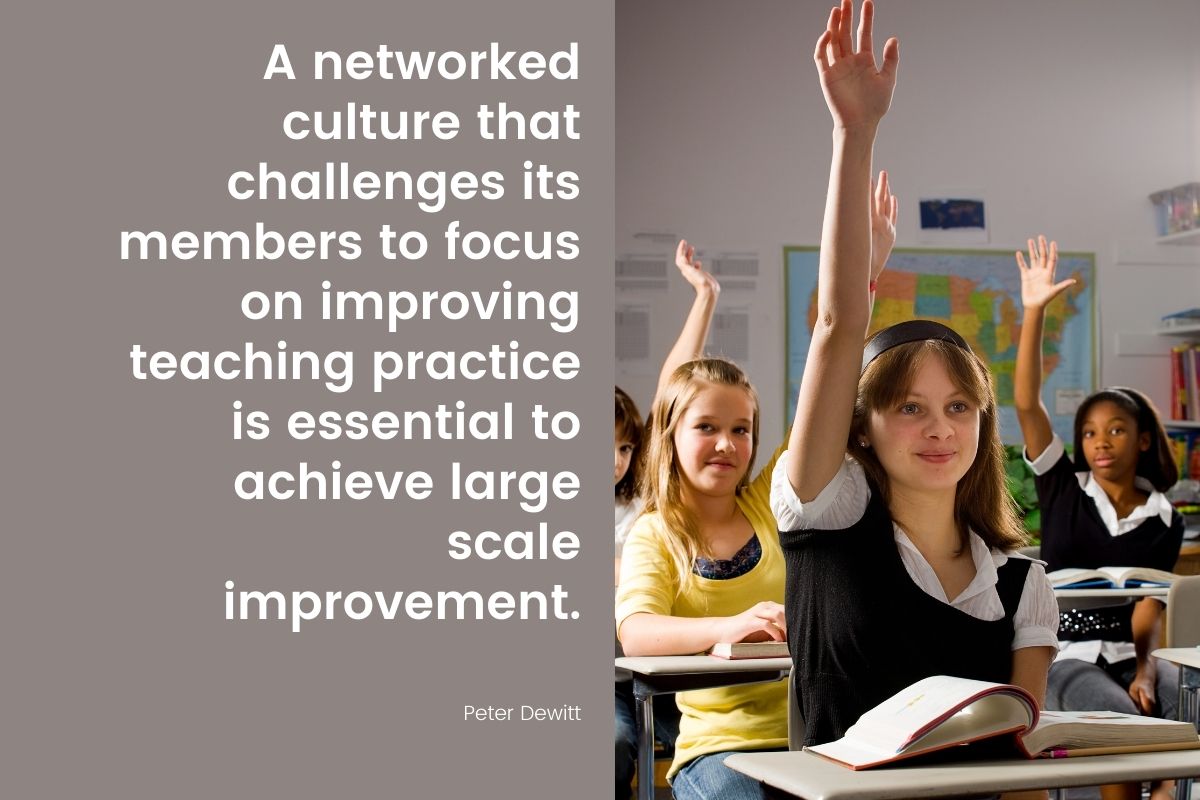
Intentionally Bold
The first thing a Bold Instructional Leader does when he/she begins to do classroom visits is to be intentional about what they expect and what they are looking for in classrooms. The NASSP article mentions “Get in Classrooms More” as one of the strategies to improve instruction and it sounds very simple, but it actually may be more difficult to do well than one might imagine. (Sheninger, 2019) I wish I had a nickel for every time I had heard a teacher say, “We never see our principal.” Mind you, that same teacher may not WANT you in their room all the time, but the point is, even the most well meaning school leaders can get stuck doing other tasks. Stating the obvious, many other things get in the way of classroom visits. Some of these things are unavoidable, however, a bold leader places high value on classroom visits and protects that time by making sure others know it is an important part of the day. Putting walkthroughs on your calendar is a good start, but also make sure your team, such as your office staff, know not to disturb you during walkthrough windows. Not only do these things protect time to get in classrooms more, but it also sends a clear message to your staff that you place a priority on visiting rooms and observing instruction.
However, going into classrooms is actually the easy part. Justin Bader, the creator of the Instructional Leadership Show, addressed the issue in his episode entitled Focus on Frequency of Classroom Walkthroughs (Bader, 2021). If getting into more classrooms is the goal, you can accomplish that without truly impacting the instruction unless you are intentional about why you are visiting the room (establish a purpose) and have the ability to differentiate what is going on, assessing it, and having the courage to give honest, productive feedback. These qualities define Bold Instructional Leadership.
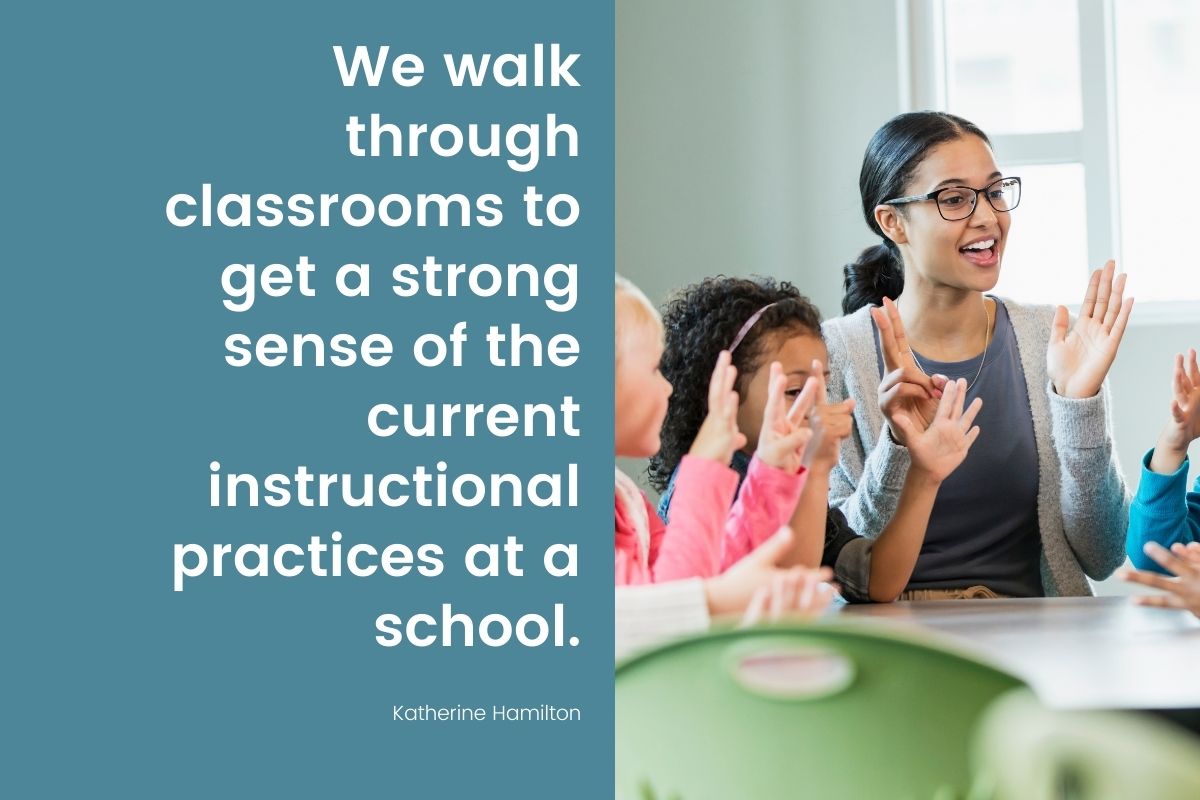
If you look for EVERYTHING you won’t see ANYTHING
Focus. Observing quality instruction should never be a surprise and that does not mean you have to tell the teachers everytime you are doing walk-throughs. What it does mean is that all staff deserve to know the purpose of the walk-through and what is expected. Key Practices for a Successful Classroom Walkthrough advocates transparency in the walk-through process so that staff does not see the process as a “gotcha” and can be more open to being part of a learning culture (Hamilton, 2019). One way to do this is to clearly establish a series of walk-through protocols, preferably around your campus goals or needs. For example, if your campus goal revolves around students developing ownership of their learning, designing a consistent set of look-fors in the classroom that identifies agreed upon characteristics of student ownership that helps define what you are looking to your staff and clarify the purpose. By establishing a purpose and clearly defining it for your staff, it allows you to focus on a specific skill or strategy and formatively gauge implementation. If at all possible, stick to the focus both during the walk-through and throughout the debrief.
What is the Teacher Doing?
There are two key components to establish a focus for a walk-through. One of them is determining what the teacher is doing. Questions should include things such as:
- How is instruction being delivered?
- How are questions delivered? (equitable, wait time, high/low level, etc)
- What strategies are being used to allow the learner to show they understand?
- How does the teacher connect prior knowledge to new learning?
Teachers are the designers of the lessons and evidence of quality planning shows up in many ways during the course of a class period. It is important to observe instructional practices, scaffolding, questioning strategies, etc. in order to either describe what is happening or assess it at an appropriate level for the grade level or course.
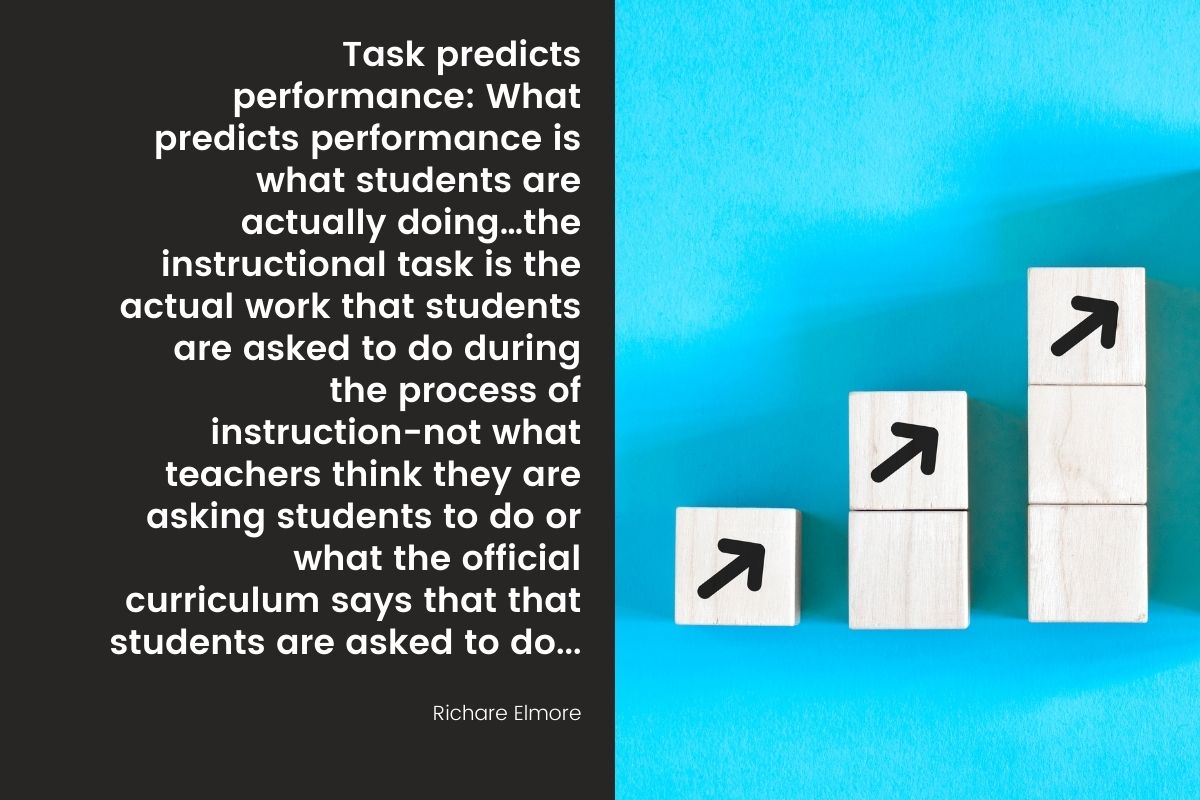
What are the Students Doing?
The second component of a well-designed walkthrough should include intentionally observing what the students are doing. Not what the teacher asked them to do, but what they are actually doing. This is often a missed opportunity for an instructional leader. Too often, the focus is on what the teacher is doing during a walk-through rather than what the students are learning. One specific way to safeguard against this is to intentionally put a place on your walk-through document that includes a reminder to speak to two or three students and record their responses. This may not always be possible, but at the very least, an effective school leader should place a high emphasis on what the students are doing during various points of the lesson.
Feedback
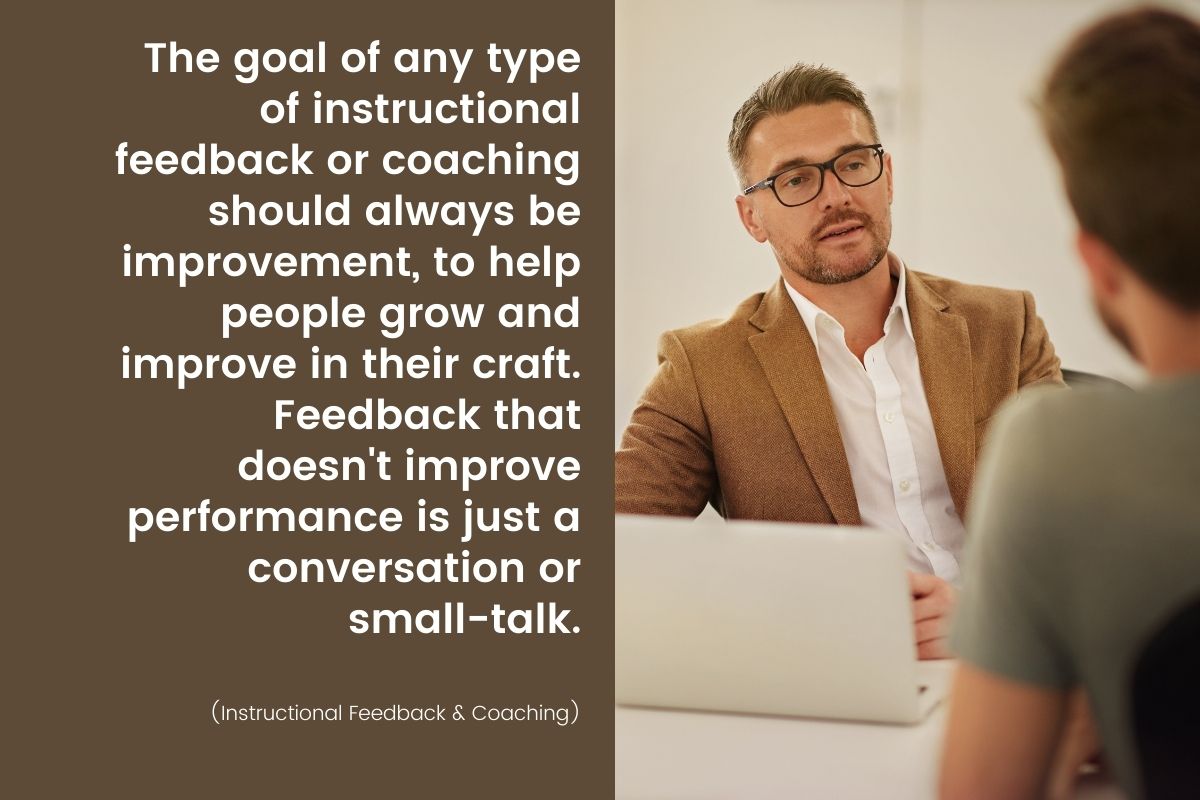
Perhaps the most important part of any walk-through is the learning that takes place through effective feedback. The “get in more classrooms” mantra is pointless without both the courage and the skill to give appropriate praise and critical feedback on what was observed. While I will not dive too deep into the extensive literature around feedback, I will share three key points to remember when considering feedback.
- If you didn’t see it, it didn’t happen: This may sound simplistic, however, feedback on classroom observations should include what was evident during the observation and if we assume too much about what we think happened before or after the lesson, we can make mistakes or poor judgments. A prime example of this is walking into an observation with either a positive or negative bias about the teacher or class. It is human nature to tend to make an observation based on our beliefs and therefore if we perceive a teacher as excellent or poor, very often that is what we will see in his/her instruction. If you can train yourself to follow the “didn’t see it, it didn’t happen” rule you are more likely to eliminate your own bias or preconceived notion. Don’t underestimate this skill. It is harder than you may think.
- Descriptive vs. Evaluative Data: When developing the focus of a classroom observation, a bold instructional leader considers the purpose and what is to be done with the information. In fairness to the teacher, it should be know if the observation is for learning/coaching or if it is for evaluation. This can be tricky, again, because as humans, it is nearly impossible to not make a judgment on what you are watching. Feedback that is descriptive allows both the teacher and the observer to analyze what was happening during instruction and make plans to address next steps. It takes both self-discipline and practice to stay at the descriptive level, but it is often the foundation of instructional coaching and improvement. Evaluative data collection about instruction and what is going on in the classroom requires a different focus and places a different level of responsibility on both the observer and teacher. In the case of an evaluative observation, the instructional leader is making educated judgments on the instruction, the task, the teacher behaviors, the student behaviors, etc. This can also be difficult because it requires a high level knowledge about effective instruction and best practices. At some point in every educational leader’s career, they are forced to come to their own definition of high-quality instruction and use that definition to observe and provide feedback to his/her teachers.
- Debrief: Perhaps the most overlooked part of learning is reflection. In the case of a learning cycle, a leader that is intentional in regards to monitoring, coaching, or evaluating quality instruction will include time to reflect on the observations and debrief with the appropriate staff. Many leaders find ways to include multiple people in the observation and discussion, but however it is done, the real learning happens when time is made to debrief the lesson. Again, “getting in more classrooms” alone will not improve instruction. It must come with the knowledge to describe and evaluate what is happening and have the courage to articulate needs and next steps. It takes time to do well, but an instructional leader knows that his/her role includes improving learning and teaching and it will not happen by itself.
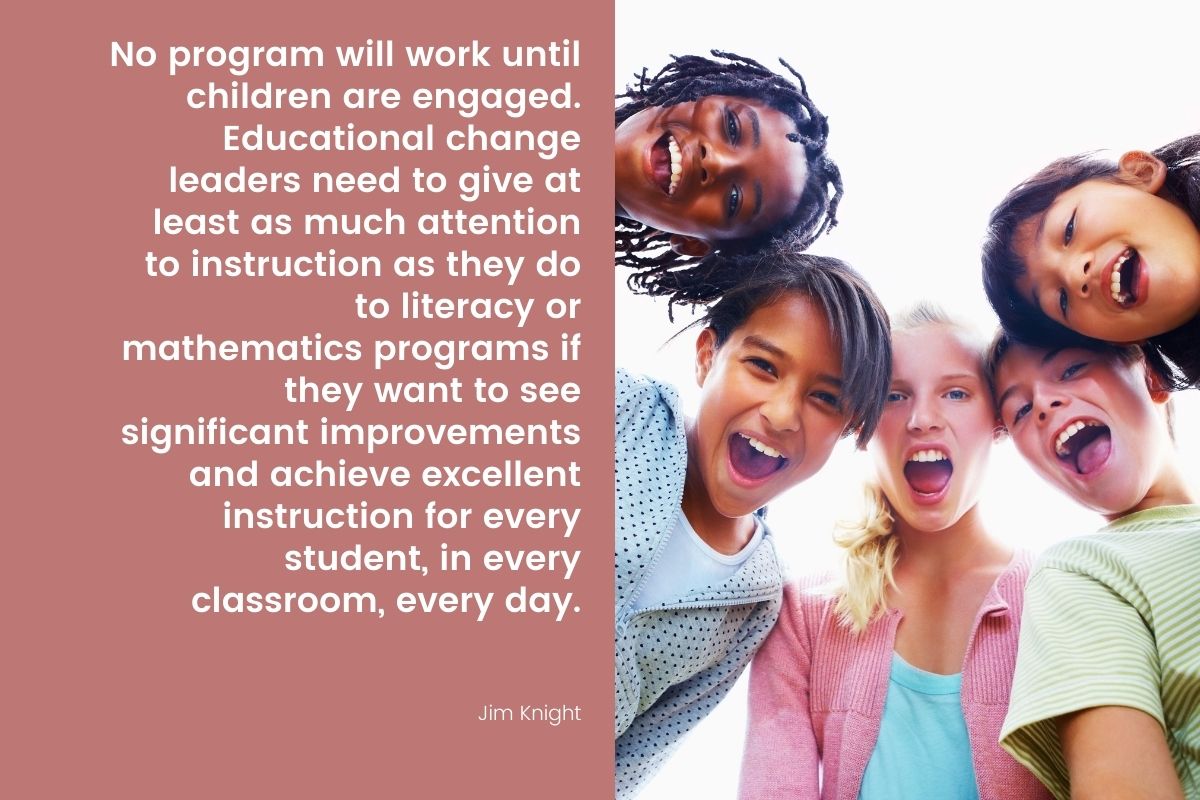
Impacting Practice
Establishing a consistent process for monitoring the instruction in a building is a key to instructional leadership. Creating a cycle for systematic observations, feedback, and reflections must be instilled by the leader. As the learning culture of a building takes hold, it easily becomes contagious with more and more teachers seeking ways to improve on their own or with the help of others. Once teachers see the positive impact that even small adjustments in their teaching can bring, they may even request more walk-throughs observations and see you more as a learning leader that can provide them valuable feedback rather than be seen as simply an evaluator of compliance. The conversations around learning and teaching are perhaps the best sign of building an instructional culture at your building. It can also be an indicator that your BOLD Instructional Leadership is having a positive impact on the classrooms you serve.
Resources
Many educators have created ways to monitor instruction and give feedback. Templates and checklists can be valuable tools to help educators maintain the focus. While I have provided several different forms as part of the on-line Bold Instructional Leadership course, I would also encourage you to create your own and use them as part of a formative inquiry cycle about the learning and teaching in your building. People, not programs! #BEBOLD.
More Learning
Coming soon in part FOUR of our Bold Instructional Leadership series, we will take a look at ways an instructional leader can use data to monitor and assess what is happening on their campus. If you would like to read more, you can also order my book Inside The Principal’s Office, which is designed to not only look at instructional leadership, but explore the other aspects of education’s toughest job.
I also hope you will consider registering for the upcoming on-line course Bold Instructional Leadership. In this asynchronous on-line course you will gain valuable insight and resources on how to enhance your instructional leadership.
Intentionally Bold: Instructional Leadership Course
Register for the course by clicking here to learn more and register!
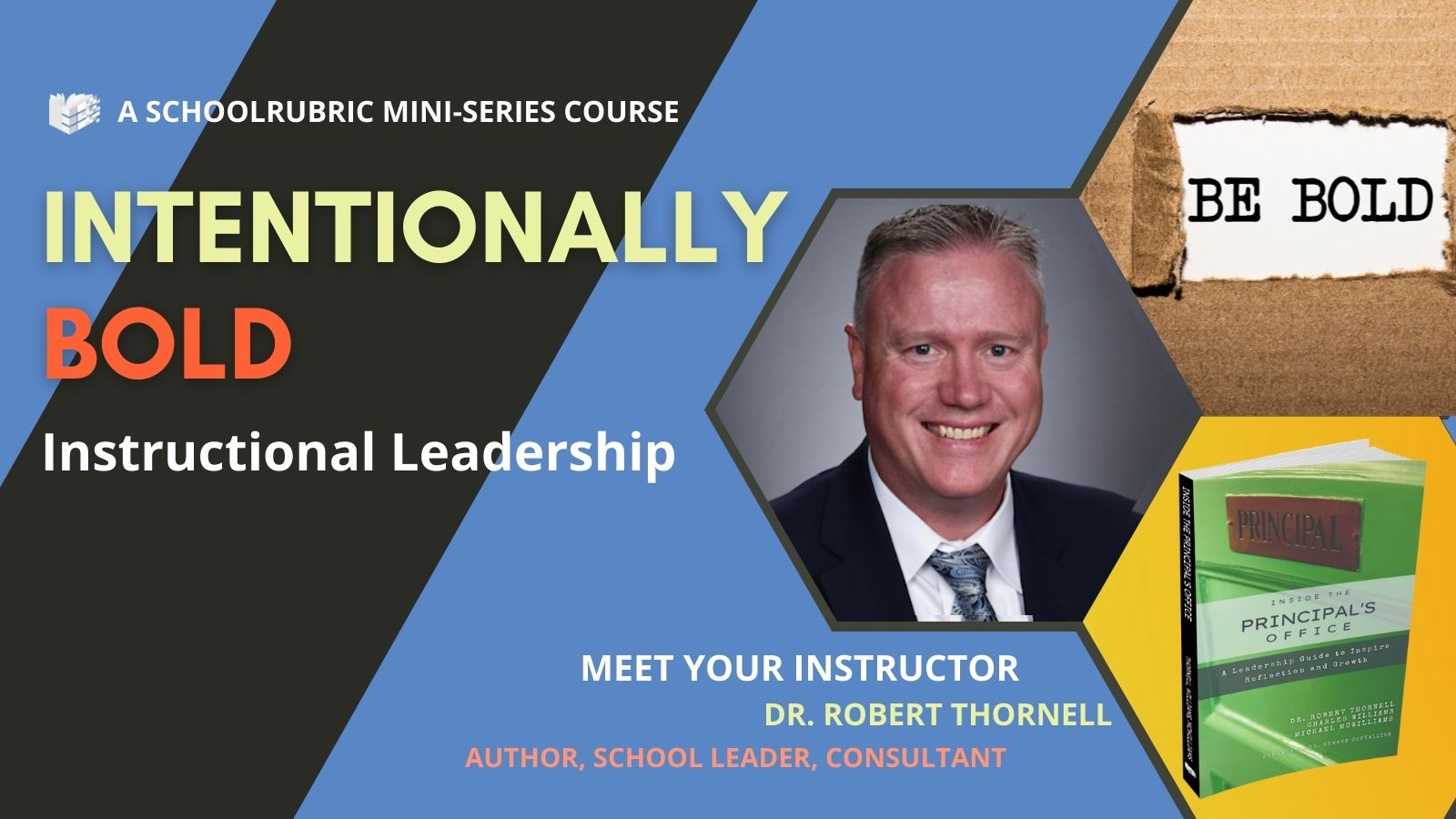
AUSTIN, S. (2015, April 1). 4 Steps of Inquiry That Help Principals Improve Instruction. Center for Educational Leadership. Retrieved May 17, 2022, from https://k-12leadership.org/4-steps-of-inquiry-that-help-principals-improve-instruction/
Bader, J. (Director). (2021). Instructional Leadership: Focus On Frequency of Classroom Walkthroughs (124th ed.) [Film]. https://www.facebook.com/watch/live/?ref=watch_permalink&v=1024635801438301
DeWitt, P. M. (2020). Instructional Leadership: Creating Practice Out of Theory. SAGE Publications.
Fiarman, S. E., City, E. A., Elmore, R. F., & Teitel, L. (2009). Instructional Rounds in Education: A Network Approach to Improving Teaching and Learning. Harvard Education Press.
Fiarman, S. E., City, E. A., Elmore, R. F., & Teitel, L. (2009). Instructional Rounds in Education: A Network Approach to Improving Teaching and Learning. Harvard Education Press.
Hamilton, K. (2019, April 11). Key Practices for a Successful Classroom Walkthrough – Ensemble Learning. Ensemble Learning. Retrieved May 5, 2022, from https://ensemblelearning.org/key-practices-for-a-successful-classroom-walkthrough/
Instructional Feedback & Coaching. (n.d.). Principal’s Playbook. Retrieved May 17, 2022, from https://www.theprincipalsplaybook.com/instructional-leadership/instructional-feedback-coaching
Sheninger, E. (2019, August 7). 10 Strategies to Improve Instructional Leadership. NASSP. Retrieved May 5, 2022, from https://www.nassp.org/2019/08/07/10-strategies-to-improve-instructional-leadership/
This article is available and can be accessed in Spanish here.

